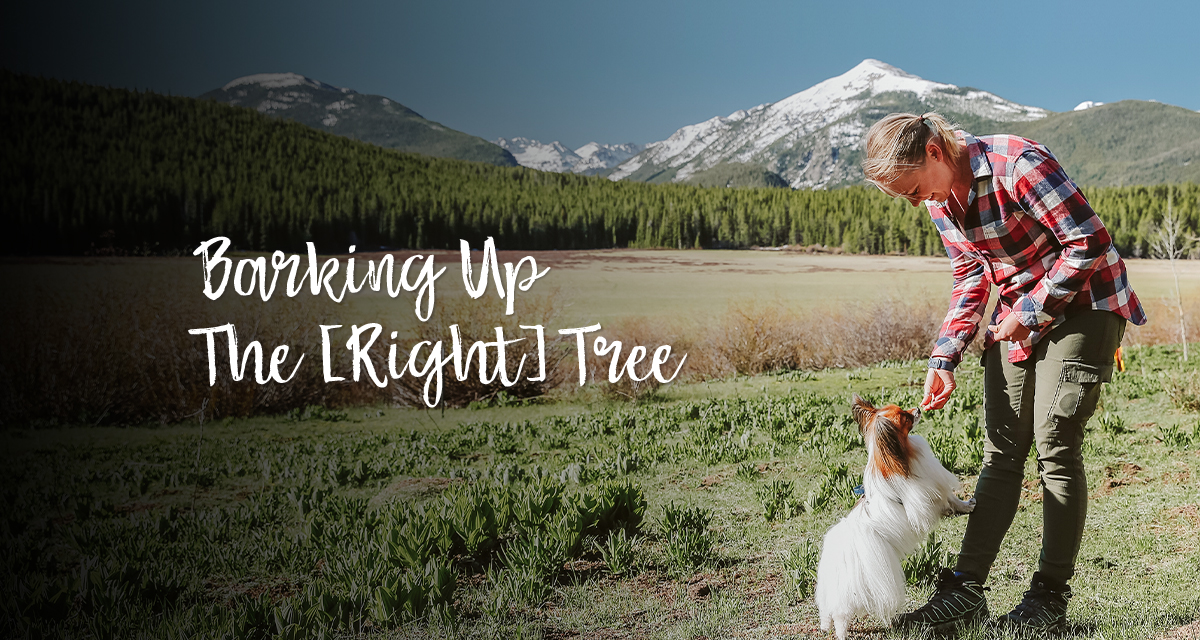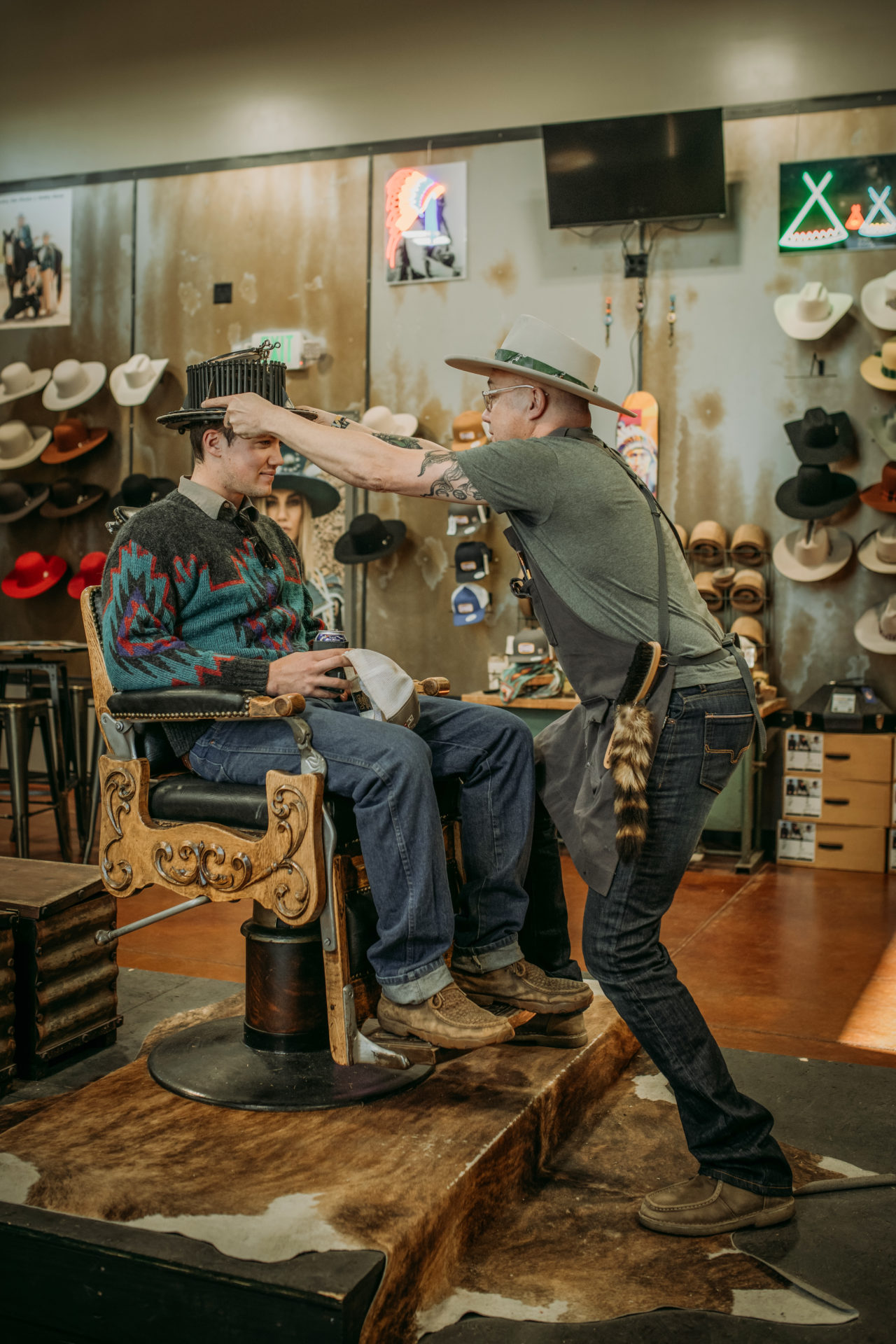By Laurel Thompson –
Picture this: it’s a beautiful day and you’re out shopping or brewery-hopping with friends and family when you stumble upon a pen of puppies from a local shelter. The kids squeal in delight and tug on your pant leg, begging you to let them take one home. Try as you might, you give in to temptation and end up at the booth, signing the adoption papers.
Even if your adoption story doesn’t involve a spontaneous puppy, bringing home a new pet is an exciting milestone that can almost feel too good to be true—until it isn’t. Kristie Fisher, founder of Big Bones Canine Rescue in Windsor, calls it the “honeymoon phase,” which can last up to three months before your new dog gets comfortable and really shows you who they are.
During that honeymoon phase, the dog might get along great with everyone in the house and obey your every command. Fisher warns us that lovable behavior can be due to the dog’s insecurity and not knowing where they fit into the chain of command, which can quickly change once they find their place.
However, it isn’t uncommon to experience some challenges right off the bat. Many dogs show immediate signs of stress with new owners and a new environment, often resulting in separation anxiety. This fear of being left alone can cause them to whine, destroy property and have accidents in the house, even if the dog was already housebroken.
To help them adjust to their new space, Fisher recommends prepping the house before you bring the new dog home. Set up a kennel so your dog has a safe, den-like area, and only leave the house for short periods of time at first so they know you’re coming back. When you’re home, let them sniff around and mingle with other people and pets, but be sure to supervise so they don’t nip, guard their food bowl or find a way to escape.
Some behaviors, like chronic fence-jumping and howling at the window, can persist beyond the honeymoon phase and are more likely with certain breeds, though it can be difficult to predict those things before adopting a mutt. Amber Quann, owner and trainer at Summit Dog Training in Fort Collins, says dogs bred to be outside companions can have highly primitive instincts, and can be more prone to digging.
“For working dogs that were bred to be outside, digging can be a highly functional behavior that allows them to create a cozy spot to circle up in,” she says. “Terriers that are bred to go down rabbit holes and flush out game are also more likely to exhibit digging because that’s what their thousands of years of genetics are telling them to do.”
While some dogs may be more genetically wired to dig, nearly all puppies are known to chew and bite. Quann says that’s a normal part of teething, which occurs in stages until they reach about a year old. They also use their mouths to explore new things, including the coffee table and your hand, which is where chew toys pay off.
Puppies have a lot of energy, so it’s also important to consider your lifestyle before adoption. Active breeds, like border collies, aussies and heelers pair well with owners who have an active lifestyle and can help them get that energy out well into adulthood. On the other hand, giant breeds are nice if you want a dog to lounge with, and toy breeds make great lap dogs.
Fisher generally recommends older dogs for people who want a more mellow pet. For those adopters, the health of the dog is something to consider because unlike puppies (who are more likely to have easily treatable things like parasites), there may be larger issues, like dental disease, hip problems or even cancer.
Dr. Arun Rustgi, veterinarian and owner of Mountainwood Pet Hospital in Windsor, says the health of an adopted dog is always a gamble: “Most rescues are pretty good about vaccinating, de-worming and getting their animals spayed or neutered. Sometimes older dogs wind up at the shelter because their previous owner moved or died, and we may have some prior history to work with. But a lot of the time rescue dogs are strays with little to no medical history at all.”
Pet insurance makes the possibility of health issues less daunting, but it’s not always worth it, Rustgi says. It can be a good idea if you have a puppy because they’re more likely to jump out of a car window and break a leg, or swallow a sock and get an obstruction, both of which can be expensive. With older dogs, Rustgi says, it’s often better to save money instead of paying for a monthly premium for possible complications as they age.
“If your dog is older and trustworthy,” says Rustgi, “a lot of times it’s better to just sock that money under your mattress and save it for that rainy day in case your dog needs it down the road. Barring a big surgery like a broken leg or even chemo…I feel like most people would probably have money left over at the end of their dog’s life if they kept all that deductible and copay…. It also depends on the price schedule of the vet you’re using. There are a lot of low-cost places out there, so you can find a happy medium that works well with your pet.”
Another way to keep your dog out of the vet clinic—and the time-out corner—is to implement a training plan as soon as you bring them home. Ideally you want to be able to communicate with your dogs so they know what behaviors you like and don’t like, but it can take time to get there.
Quann says it’s important to get puppies out into the world as early as possible so they can practice socialization and obedience before the stubborn adolescent behaviors come into play. Puppies have short attention spans, so limit your training to three-minute sessions five times per day and focus on the basics (sit, stay, come) before moving on to more complicated tricks.
If you adopted an older dog, Quann recommends giving them a few weeks to adjust to their new routine before diving into a training plan. Coexisting together and observing their behavior gives you a good idea of what they already know and what areas are challenging for them. You can teach an old dog new tricks, but you can’t turn them into a completely different dog, so some patience and understanding is needed.
Since older dogs are usually most attentive before a meal, Quann says that’s a good time to do your training. Spend five minutes working on commands before breakfast and dinner and reward them with pieces of kibble. She notes that treats should only ever be used as a reward for good behavior and never as a bribe.
“People often pull out a treat and use it to ask their dog to sit, and that treat becomes a really important part of the cue for the dog,” she says. “That can be our pitfall when we don’t have treats, and it’s something we can avoid by asking for the behavior first and then reaching into our pocket for a treat once they’ve done it.”
When dealing with problem behaviors, often our natural instinct is to have a big reaction, which Quann says isn’t always effective. If the dog jumps up, for example, pushing them down can excite them even more, so get down on their level to give them attention instead. Overuse of the word “no” can also be problematic because the dog usually won’t know what to do.
Redirecting them to positive behaviors, like chewing on a toy instead of a person, teaches them what they should be doing instead. Pair that with positive reinforcement, and possibly a few classes with a credentialed trainer, and you’ll be surprised at how quickly they catch on.

Haley McEldowney
“Remy came from a rescue that specialized in herding breeds, which often require particular care due to the dogs’ sensitivity and intelligence. When we first met her, she refused to let me take her on a walk and even nipped at me under the table! In my heart, I still knew she was meant to be in our lives, and we brought her home anyways. She has become the most loyal and attentive dog I have ever known.”
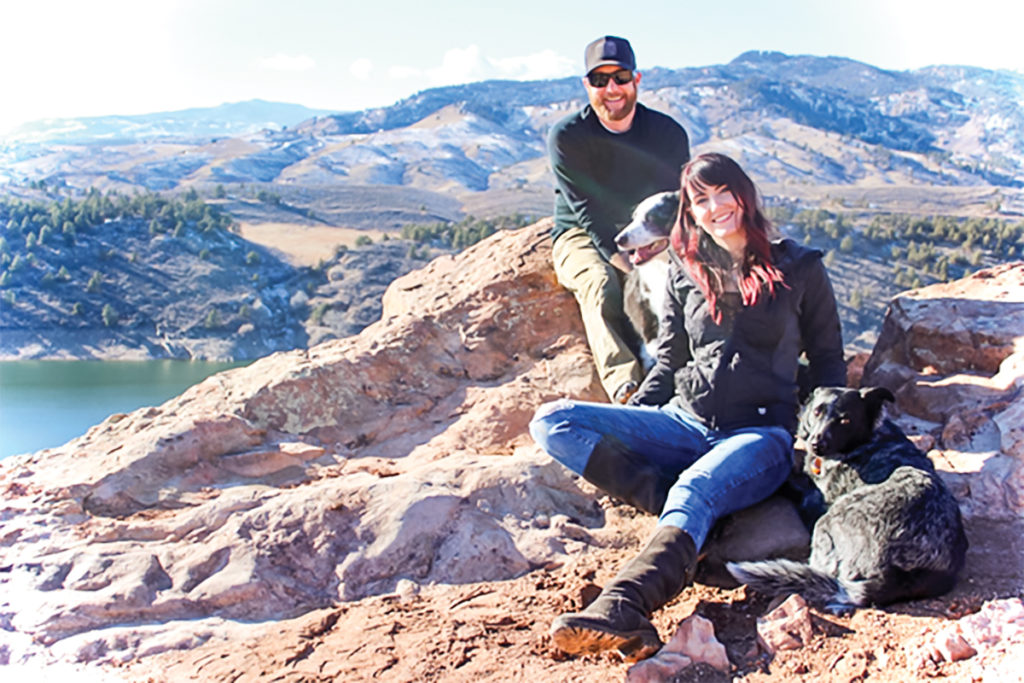
Peter Hodgkins (left) and Haley McEldowney (right) with their two rescue dogs, Benny the Australian Shepard (9 years old) and Remy the Blue Heeler (7 years old). Benny was adopted from the Larimer County Humane Society and Remy was rescued from nonprofit Herding Dogs of Wyoming.
Katie Yaun
“When we rescued Daisy back in 2016, all she knew was life on the streets. It wasn’t easy for her to adjust to sharing with her fur siblings, and although we’re still navigating through some of her behavioral challenges, it has been extremely rewarding looking back at how far she’s come.”

Katie with Daisy, a 9-year-old mutt rescued off the streets of Costa Rica.
Lynette Baker
“Lollie Pop came in us so overweight she couldn’t walk on her own. It took us one year to get the weight off her, and now she walks, runs and even dances!”
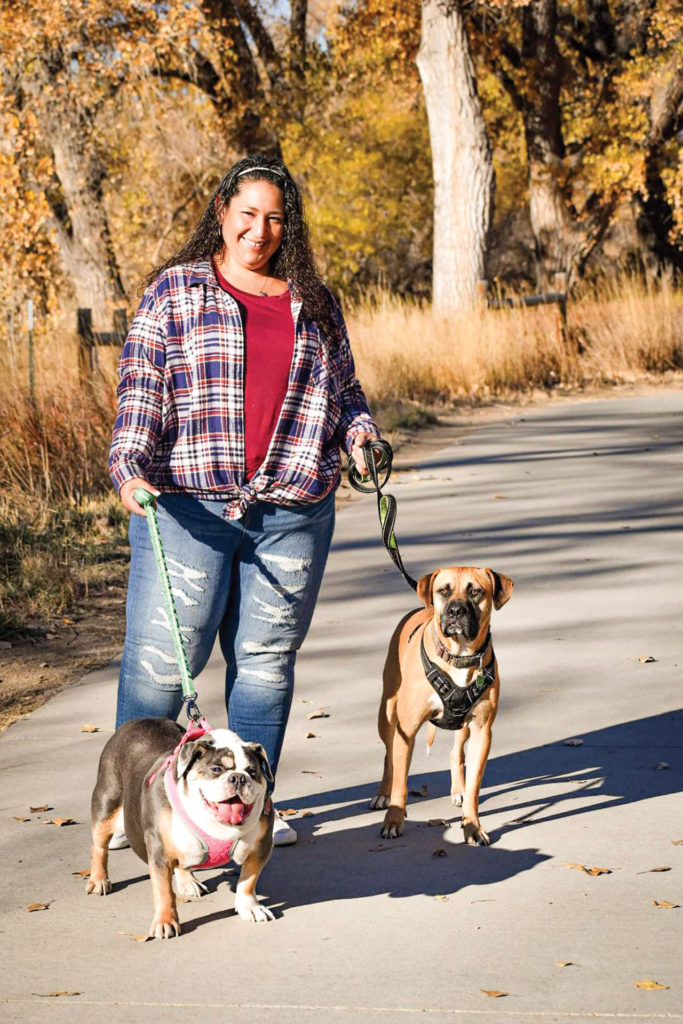
Lynnette Baker with Lollie Pop, a 6-year-old English bulldog adopted from Big Bones Canine Rescue.
Petra Drouin
“Jaxs and Chewy came from Oklahoma. Chewy came from an abusive home. Since they became part of our family they have blossomed. Jaxs was dumped presumably because he was no longer a cute puppy and had separation anxiety. Chewy no longer fears other dogs; he spent three years on a chain defending himself. Just a home, love and guidance is all it took.”
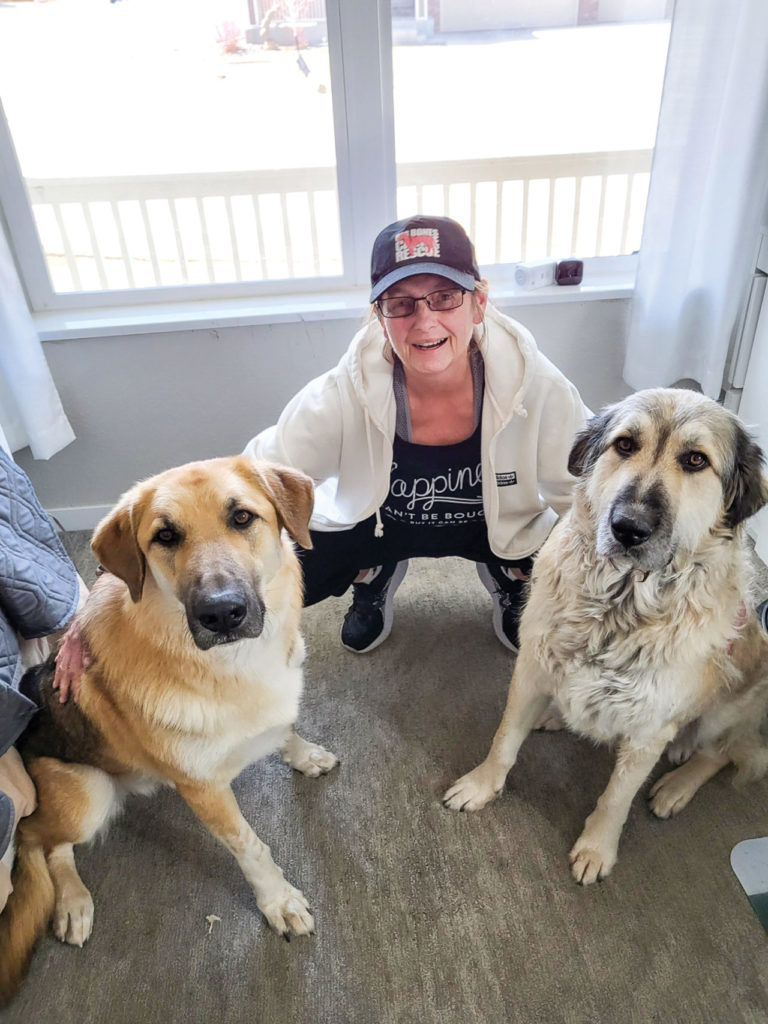
Petra Drouin with Chewy, a five-year-old mutt, and Jaxs, a two-year-old shepherd/Great Pyrenees mix.
Scott Swartzendruber
“Fennel is a great dog. She loves our kids and other dogs. She bonded quickly with all of us but especially my daughter Ruby. She sleeps with Ruby every night. The other dogs loved her and it just felt like she belonged with us when she arrived. We have fostered many dogs and sometimes you just know when you meet them that they are part of your family.”

Scott Swartzendruber with Fennel, a 5-year-old toy breed mix adopted from Mile High Canine Rescue.


Angie Grenz, Editor, with Leonard from Big Bones Canine Rescue
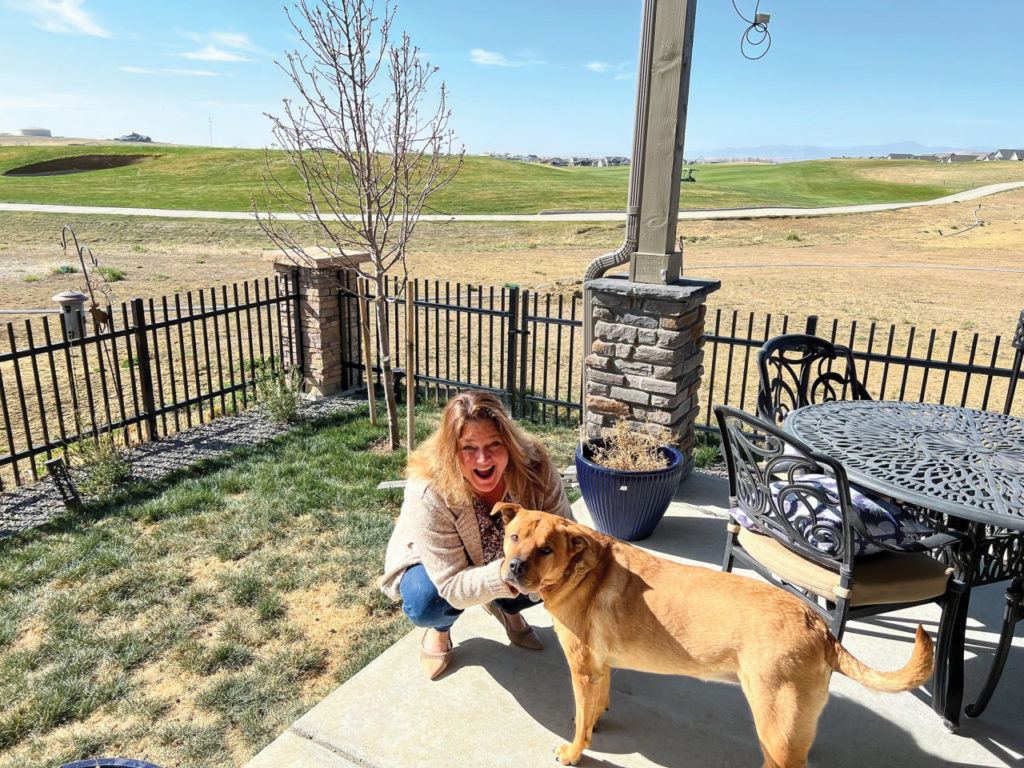
Tonja Randolph, Publisher, with Cali from Lifeline Puppy Rescue
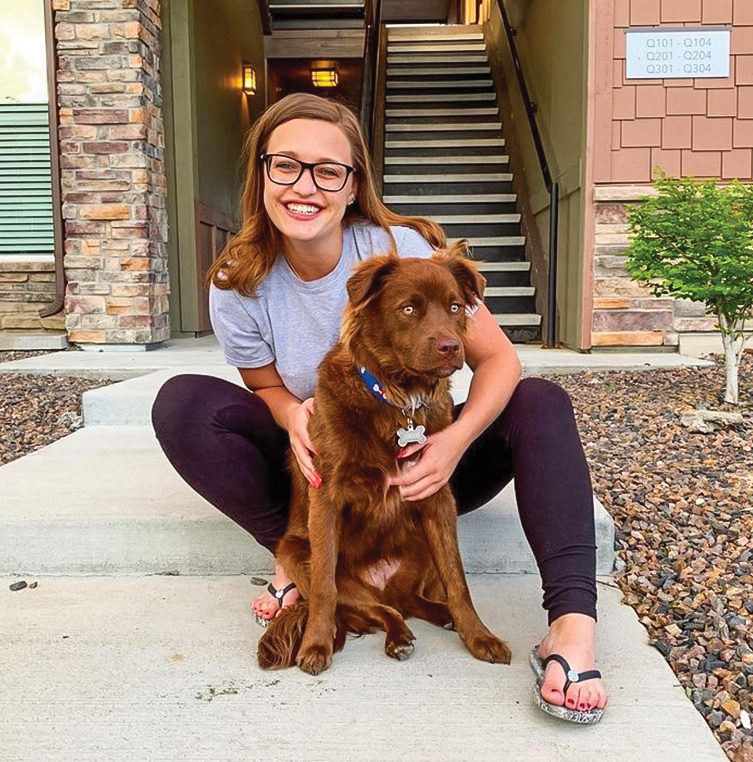
Ashley Duval, Sales Executive, with Jocco from 2 Blondes All Breed Rescue
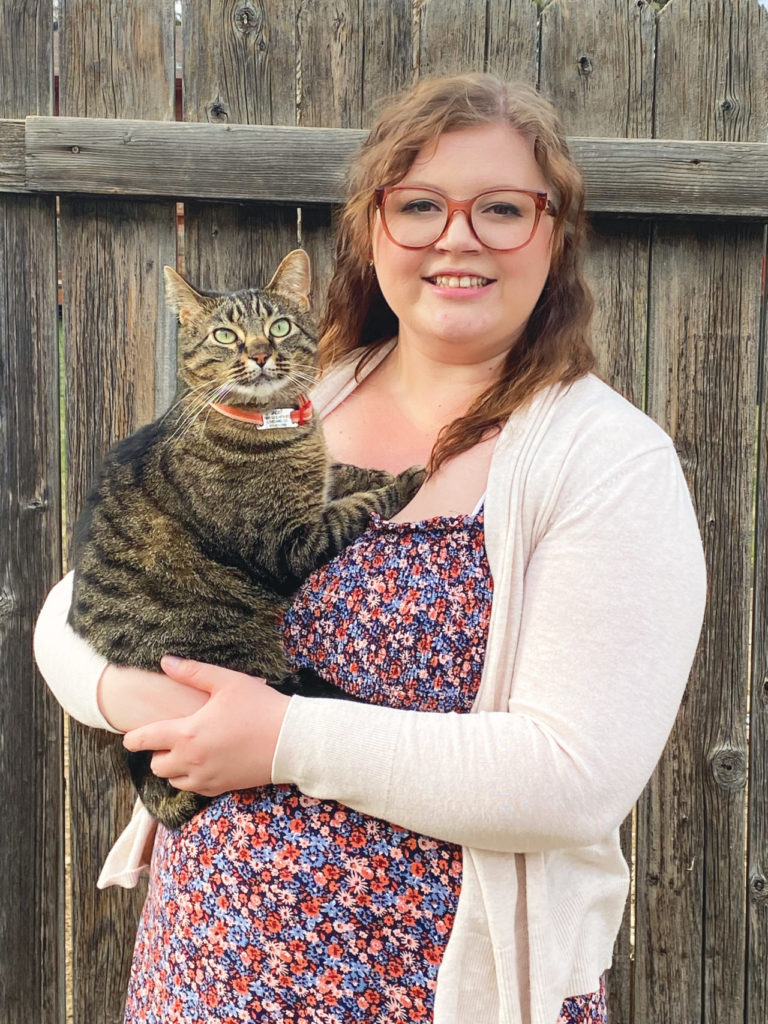
Sydney Edwards, Sales Executive, with Jade from Animal Friends Alliance
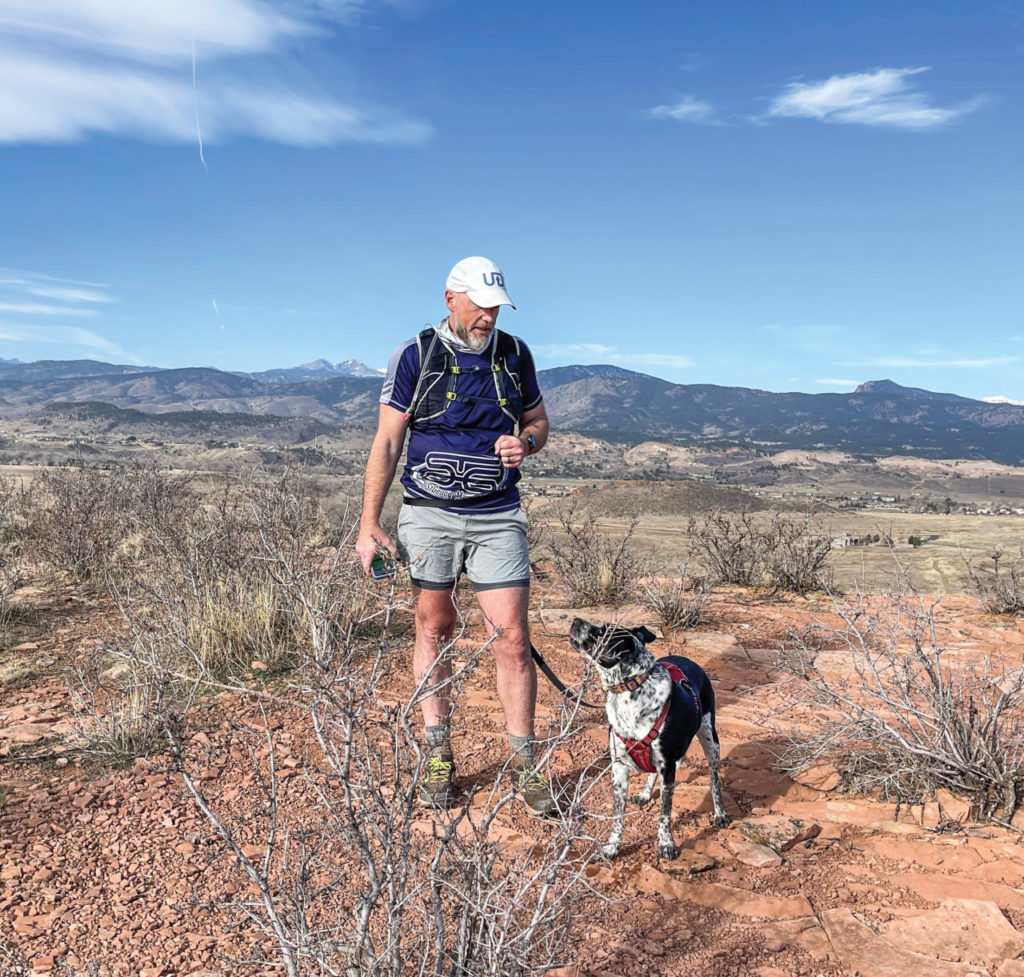
Dan England, Assistant Editor, with Pepper from Big Bones Canine Rescue
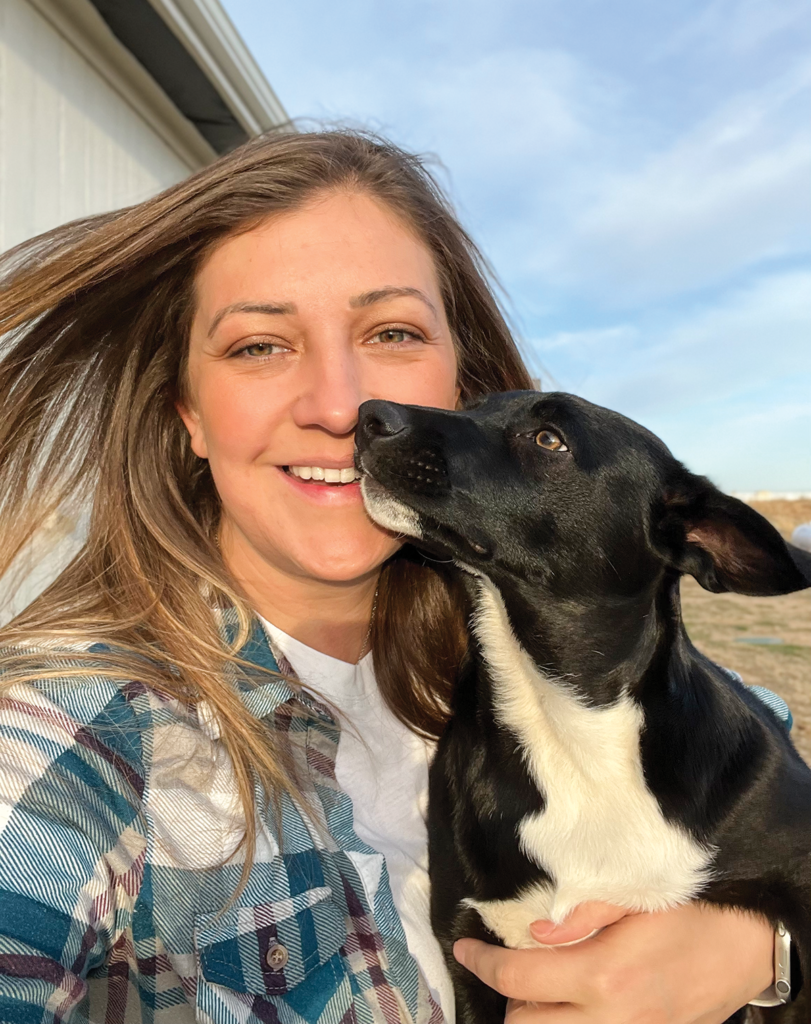
Maya Cornwell, Graphic Designer, with Miles from All Aboard Animal Rescue
______________________________
Laurel Thompson is a Fort Collins native and CSU alum. When she isn’t writing for local lifestyle publications, you’ll find her soaking up the sun, cooking something delicious, or reading a good book while sipping an iced coffee.


